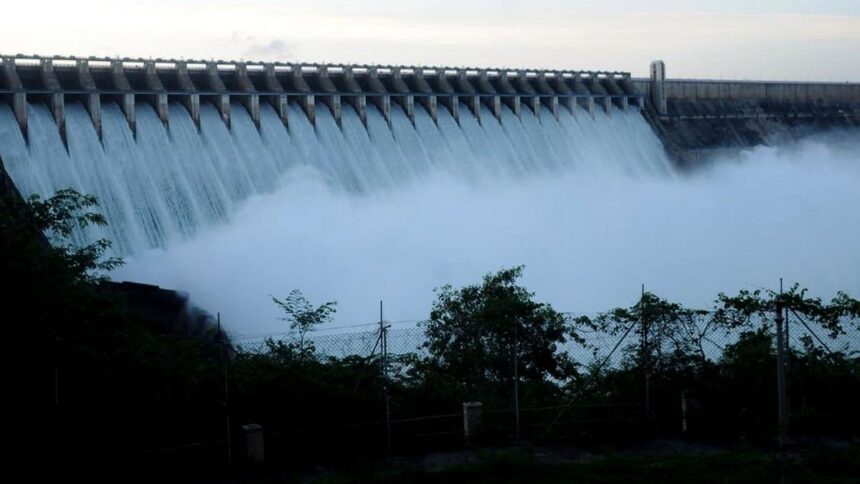Back in August 2022, irrigation authorities considered raising the spillway gates of the Nagarjuna Sagar Dam due to significant floodwater discharge from the upstream Srisailam Dam on the Krishna River.
Crops in Telangana and Andhra Pradesh are expected to face severe impacts, particularly near the Nagarjuna Sagar Dam, due to a rainfall deficit in the upper catchment areas of the Krishna Basin located in Maharashtra and Karnataka. According to irrigation authorities, this marks the first time since 2018 that the Srisailam reservoir has failed to record a surplus even by late August. The Srisailam reservoir is crucial for supplying water to the Nagarjuna Sagar Dam, downstream projects, and numerous lift irrigation and canal systems across the Telugu-speaking states.
The ayacut—land designated for cultivation or irrigation—has been receiving water from some irrigation systems reliant on the backwaters of Srisailam and Jurala. Telangana has been drawing water from the Kalwakurthy lift, while Andhra Pradesh is using the Pothireddypadu head regulator, the Kurnool-Cuddappah Canal, and the Handri-Neeva systems.
Additionally, both states have intermittently generated power at Srisailam since July 31 and August 7, respectively, releasing water into the Nagarjuna Sagar. As of the morning of August 20, the common reservoirs maintained a flood cushion of approximately 272 TMCft, which is deemed a surplus.
At 7 p.m. on Sunday, Srisailam held only 103.89/215.81 TMCft of water, while the Nagarjuna Sagar recorded 150.9/312.5 TMCft. Both reservoirs are operating at less than half of their total capacity. The Nagarjuna Sagar irrigates over 22.12 lakh acres across the two states, including 6.41 lakh acres in Telangana. Water from the Nagarjuna Sagar also supports the Alimineti Madhava Reddy Project, which sustains an ayacut of 3 lakh acres.
In Telangana, the Bhima, Nettempadu, and Koilsagar lifts draw from the Jurala Project, whereas Andhra Pradesh’s systems—such as Handri-Neeva, Srisailam Right Bank Canal, and KC Canal—rely on the Srisailam reservoir. According to irrigation officials, the ayacut in Telangana faced delays in water supply previously in 2017, when the Srisailam reservoir reached its full capacity only by the second week of October.
The Tungabhadra project situated upstream at Srisailam in Karnataka currently has a flood cushion of 21 TMCft, while the Pulichintala Project, located downstream from Nagarjuna Sagar, requires about 20 TMCft to reach full capacity as of August 20. Meanwhile, all projects within Telangana’s Godavari Basin, except for Singur—which still holds a flood cushion of 2.4 TMCft—achieved surplus levels by July.
Surplus water released into the sea in 2022 totaled 3,902.69 TMCft for the Godavari and 276.95 TMCft for the Krishna. As of August 20 this year, these figures have dropped to only 1,477.24 TMCft and 53.18 TMCft, respectively.










